Who wouldn’t want to know how to attract pileated woodpeckers? After all, this woodpecker species is the most unique of them all. With a little know-how from birdwatching experts, you can easily attract them to your yard!
I scoured the internet for days learning about this bird and how real backyard birders have lured this woodpecker to their yards so I can bring you real actionable tips for doing the same.
Here are the 5 proven ways to attract pileated woodpeckers to your yard:
- Offer food they love
- Avoid clearing dead, dying, or fallen trees
- Plant fruit-bearing trees & shrubs
- Have water available
- Hang a nesting box
I’ll go into more detail about how to attract them but first I’d like to share where they live, what they look like, their habitat, sounds, diet, mating, and nesting habits.
If you’re in a hurry, feel free to skip ahead to the details around my 5 proven ways to attract this woodpecker.
Where Pileated Woodpeckers Live
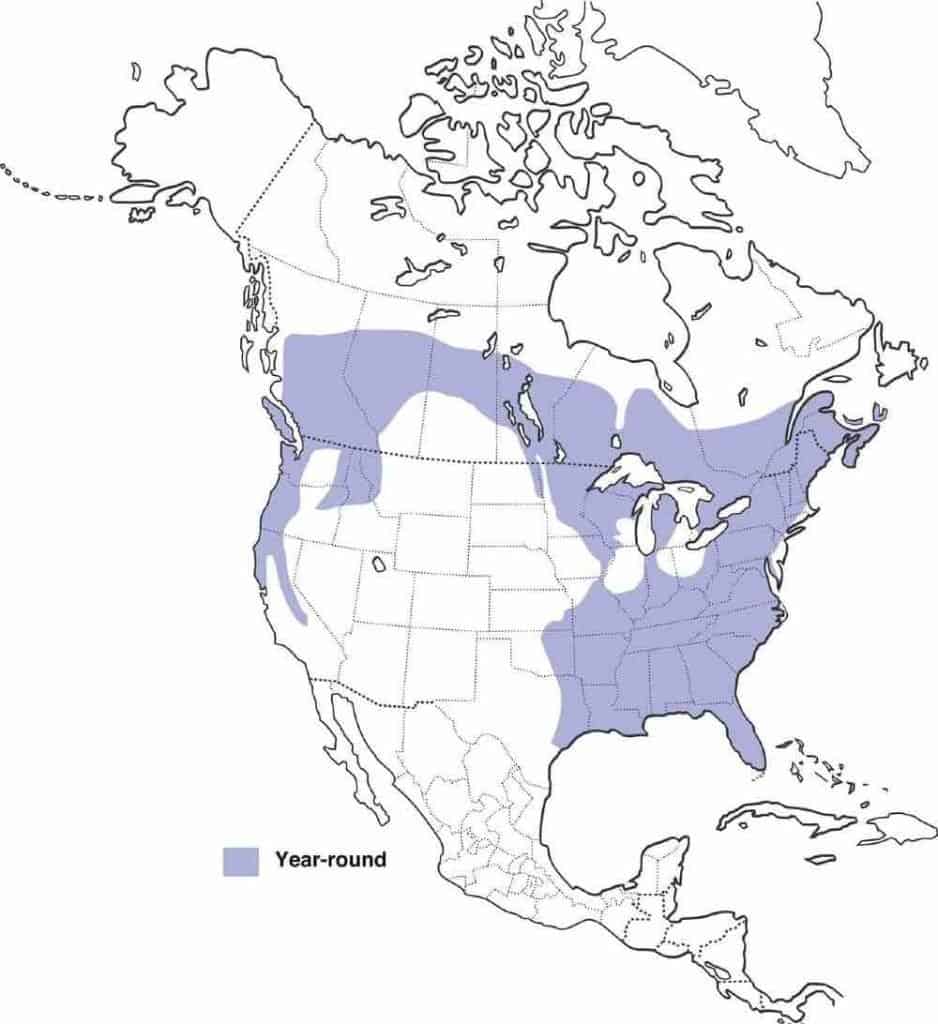
Pileated woodpeckers are year-round birds that live in Canada, the upper midwest, and eastern parts of the US. They are also found to a lesser extent in the pacific northwest.
What do Pileated Woodpeckers Look Like?
Identifying this woodpecker is very easy. It’s their size.
Pileated Woodpecker Size
Pileated woodpeckers are the largest woodpeckers in North America sizing in at about 16-19” in length – about the size of the common crow. While in flight their wingspan can reach 26-30”.
They’re mostly black with white stripes on their face and neck with white underwings. The flaming red triangle-shaped crest is unmistakable and the male also has a red stripe on his cheek.
There are two key differences between the male and the female pileated woodpecker – the crest and cheek.
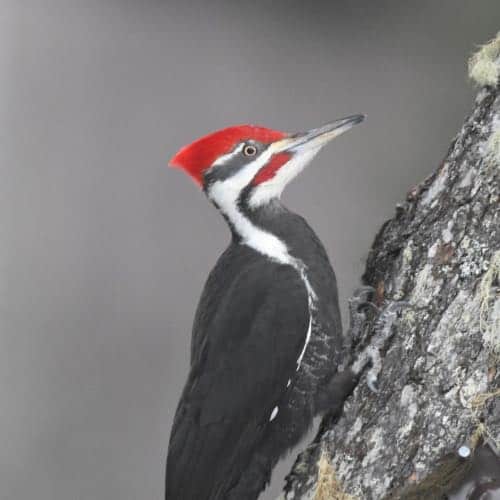
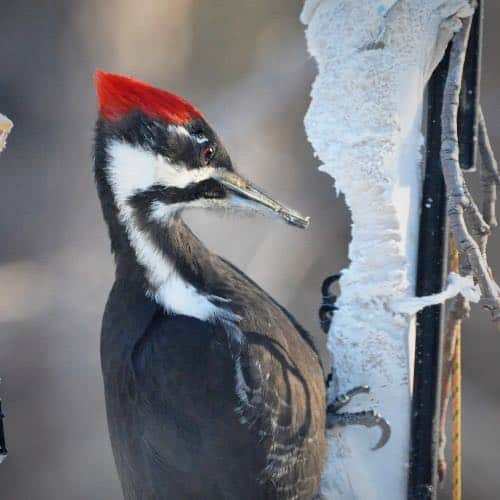
They have long, tough beaks with a tip shaped like a chisel – ideal for all the pecking they do to drill into bark for insects and excavate holes for nesting. Don’t believe me? Check out this \ video highlighting the pileated’s amazing work ethic!
One of the most interesting attributes of this woodpecker is its tongue which is designed for easy capture and consumption of their favorite food – insects.
Their tongue is sticky, contains barbs (handy for capturing and drawing insects into their mouth), and is extremely long! In fact, the tongue is so long the bird’s unique anatomy provides space for it to wrap the tongue in and around the skull when not in use.
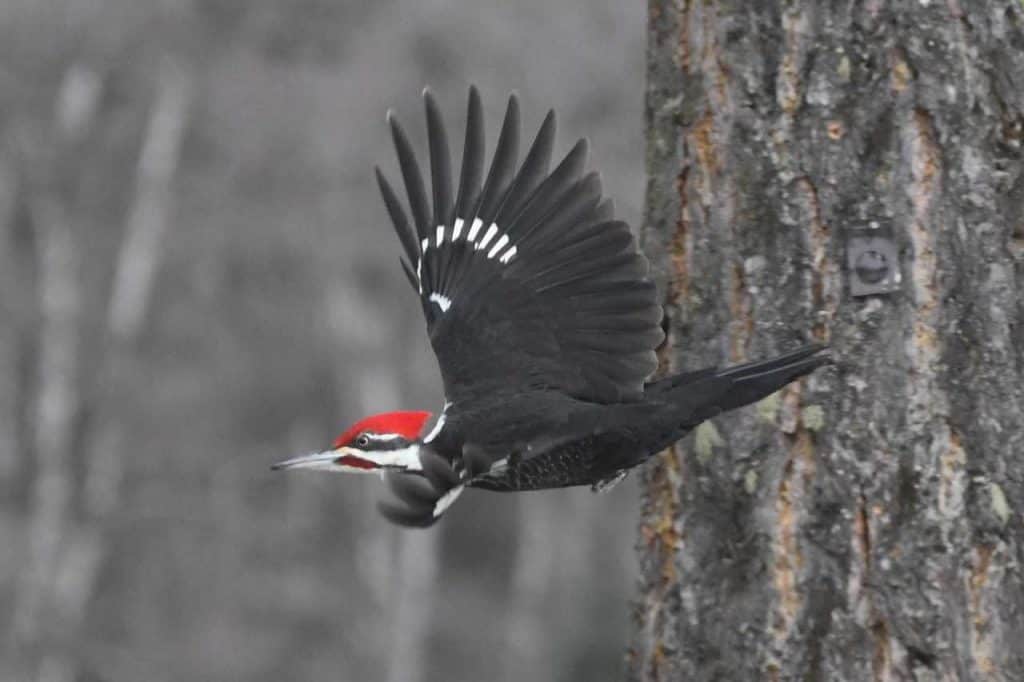
This bird’s flight is strong and smooth but slow. Given their large stature it’s a true sight to behold.
The physical attributes of this bird are fairly unique so they are rarely confused with other birds.
Habitat
Pileated woodpeckers live in forests and wooded areas that offer tall deciduous (leafy trees like maple & beech), coniferous trees (like evergreen & pine), and lower fruit & nut-bearing trees & shrubs.
They’ve even been found in small, urban wooded areas in and around backyards.
Dead and decaying trees are ideal as they provide a host for this bird’s primary food source (insects) as well as an ideal place to drill out a home for nesting.
As long as the trees are mature or decaying the area offers an ideal habitat for these woodpeckers. In fact, they don’t even have to be standing trees. Many of these woodpeckers are happy to drill away at fallen logs or stumps which also offers the promise of tasty insects. Since their favorite food is carpenter ants and carpenter ants are often the culprits behind dead trees it makes sense the woodpeckers would feel at home around them. Dead trees = breakfast, lunch & dinner!
What do Pileated Woodpeckers eat?
Pileated woodpeckers prefer to eat insects over any other type of food. They will peck away under the bark of the tree to get at the insects and scoop them in with their long tongue.
Carpenter ants are clearly their favorite. According to audubon.org, more than 60% of their diet comes from carpenter ants.
Following carpenter ants, other insects they will dine on include other ants, flies, beetle larvae, caterpillars, termites, grasshoppers, and cockroaches.
When insects aren’t available they’ll turn to wild fruits and nuts which are estimated to be 25% of their diet.
Like many other woodpeckers, pileateds love suet and other backyard bird feeder offerings. Spoiler alert: One key way to attract this massive bird is with feeder food the love! More on that in a bit.
What do Pileated Woodpeckers Sound like?
Before you ever see a pileated woodpecker you are more likely to hear it. They have a very distinct sound described as “Tarzan-like”. Take a listen and tell me if that doesn’t sound straight out of a Tarzan movie.
Pileated Woodpecker Call
Pileated Woodpecker Drum
This woodpecker will also drum away on hollowed wood (e.g. dead trees, cedar siding, etc) to attract a mate.
Mating, Nesting, Eggs & Fledglings
Pileated woodpeckers are faithful birds choosing one mate for life except for when one dies. Only then will the other find a new mate.
The mating season generally takes place between mid-May and mid-July.
When the couple is expecting it’s primarily the male who takes the burden of excavating their home. That is, he pecks away at a tree creating an oval opening and further excavating until there’s a 10-24” deep cavity to lay, incubate, and raise up the young.
The female lays 3-5 eggs in each brood. They are white eggs about 1.3” x 1” in size.
Incubation is shared between males and females for about 15-18 days during which time they must be on the lookout for nest raiders such as weasels, squirrels, rat snakes, gray foxes, and American pine martens.
Both males and females also share feeding the juvenile using the standard method of regurgitation. This goes on for 24-31 days until the young woodpecker becomes a fledgling and leaves the nest to forage for food on his own.
Immature woodpeckers remain with their parents for as long as 3 months.
I couldn’t resist sharing this video of baby pileated woodpeckers!
Predators
In addition to the natural predators that could raid the nest eggs, they may also fall prey to hawks, owls, eagles, feral cats, and coyotes.
Five Proven Ways to Attract Pileated Woodpeckers to Your Yard
If you live within the range of this amazing bird you have a good chance of spotting one as they are fairly common. They’re more likely to visit your yard if it offers elements of their natural habitat and food preferences.
This woodpecker is relatively shy so be patient when waiting for their visit. Also, they are territorial birds often defending over 100 acres, so you shouldn’t expect more than a pair of them to visit your yard at a time.
1. Offer food They Love
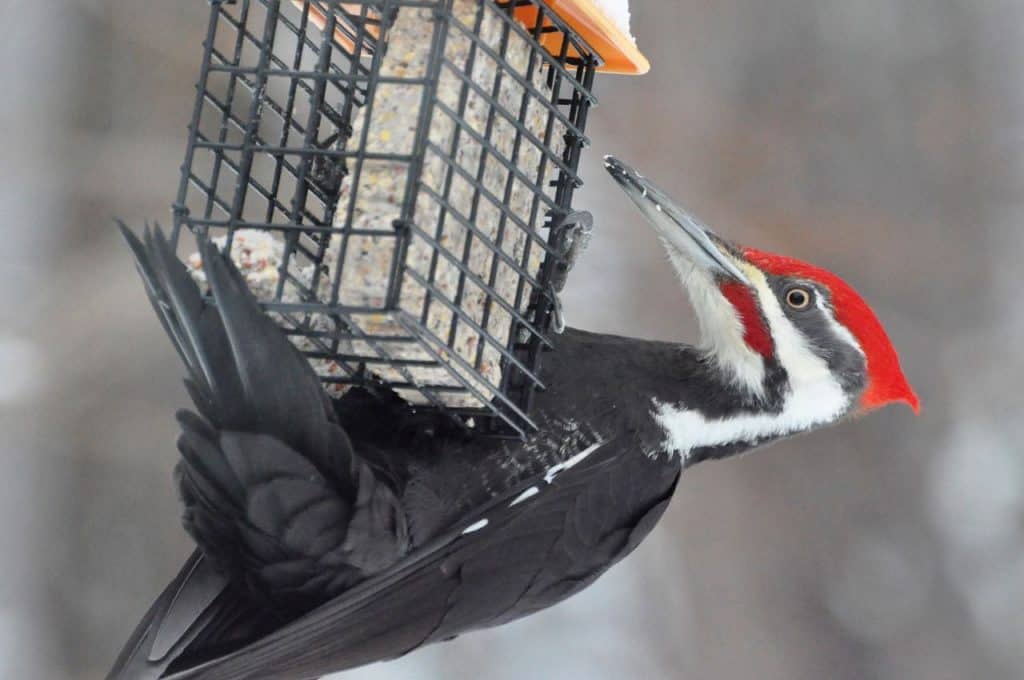
During the fall and winter months, your chances of attracting a pileated woodpecker to your yard increase dramatically as their favorite food choice (insects) become scarce. However, many people offer bird food year-round and regularly see this woodpecker visit their yard.
Of all the bird food people offer at the feeder, time and time again the same few types keep emerging as the most popular for attracting this bird. In order of having the greatest success they include:
- Suet
- Peanut butter
- Shelled peanuts
- Safflower seed
- Sunflower seed
- Songbird fruit & nut seed mix
Pileated woodpecker suet feeder
If you plan to offer bird food to attract these woodpeckers make sure the feeder is large enough to accommodate these large birds which are typically 16-19” long! In the photo above the bird makes the suet cage “work” but a longer one with a tail prop may be more ideal.
I recommend the suet feeder below. Its long tail prop is ideally suited to the pileated and is made from recycled plastic making it easy to clean and durable to last longer.
Best Feeder for Pileated Woodpeckers
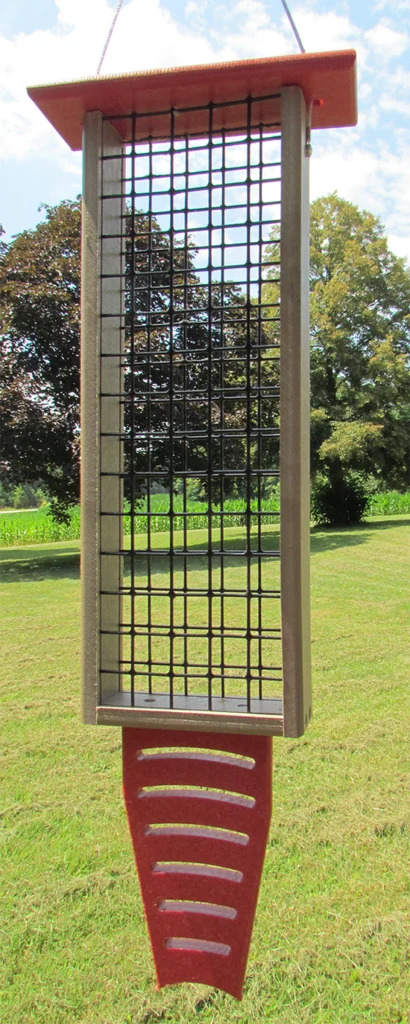
Receive 10% off your first order using coupon code ONTHEFEEDER when purchasing from JCS Wildlife.
I’ve seen many feeding on log-style feeders with holes filled with specially shaped suet “logs” or stuffed with peanuts and peanut butter. Generally, these feeders are long enough for pileated woodpeckers.
2. Avoid clearing dead, dying, or fallen trees
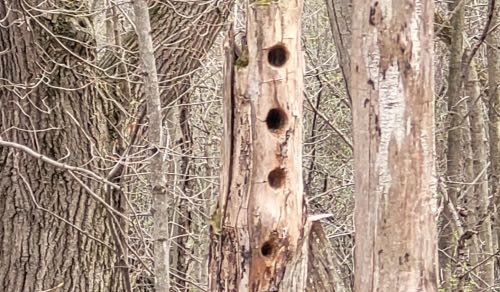
Dead, dying or fallen trees offer the ideal environment for them to forage for food and establish a nesting place for baby pileated woodpeckers. If you’re serious about attracting one to your yard, resist the urge to haul away the fallen trees and knock down the dead ones.
3. Plant fruit-bearing trees & shrubs
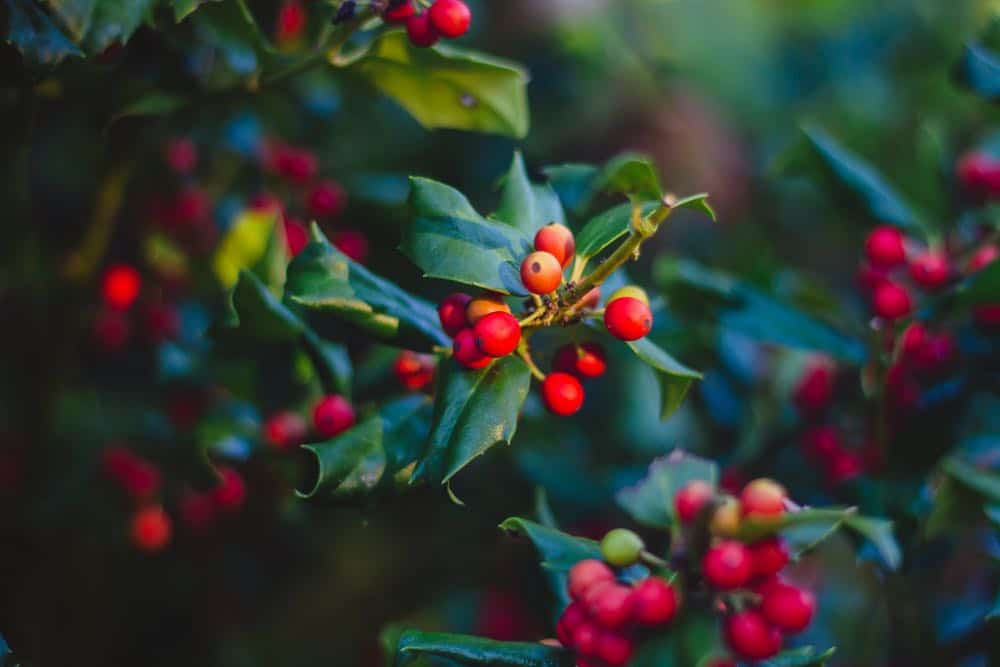
Although not something you can offer immediately, planting fruit trees and shrubs in and around your yard will pique the interest of a nearby pileated woodpecker and effortlessly provide food year after year. Try planting some of these fruit-bearing plants:
- Greenbrier
- Hackberry
- Sassafras
- Blackberries
- Sumac
- Holly
- Dogwood
- Persimmon
- Elderberry
They also dine on poison ivy but I don’t recommend purposely planting this in or around your yard!
4. Have Water Available
All birds need water to drink and bathe in. Pileated woodpeckers are no different. If a natural source of water is not available nearby consider installing a pond – even a small patio pond will attract wild birds.
A birdbath is another viable option. Birds are drawn to moving water so adding a fountain to the birdbath could increase your chances of attracting one.
Winter presents a challenge for wild birds’ access to fresh water. Offer a heated birdbath to supply liquid water for drinking and bathing, and you may attract more than one pileated!
5. Hang a nesting box
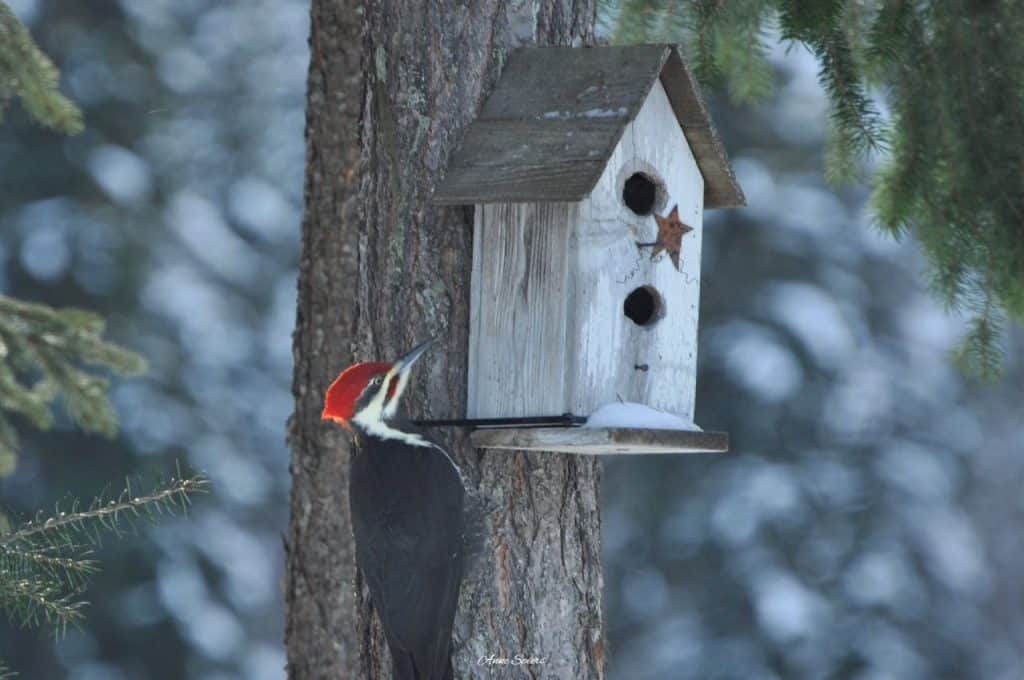
There have been reported instances where a pileated woodpecker has used a man-made nesting box, but it’s not common.
According to nestwatch.org, they may use a nest box if it’s located in a forested area that lacks dead or dying trees greater than 21″ in diameter.
So, if your yard fits the bill (pun intended) you may enhance your chances of attracting one of these magnificent woodpeckers to your yard by putting up a nesting box. Be sure to follow these guides:
- Hang the box in the interior of your wooded area.
- Hang the box 15-20′ high.
- Pack the box tight with sawdust enabling some matter for the woodpecker to excavate.
- Attach guards to deter nest-raiding predators.
Nestwatch.org provides nest box plans if you wish to build one yourself.
Maybe you’ll get lucky and have a pair move in!
Next Steps
I think you’ll agree this enormous woodpecker is worth the effort to attract to your yard. Take and apply some of the tips I provided or if you’re really serious about attracting pileated woodpeckers to your yard, apply all of them!
Good luck and happy birding!
Frequently Asked Questions
How do you pronounce pileated woodpecker?
There are two popular pronunciations of a pileated woodpecker and they’re both correct! They are:
- Pī-lē-ˌā-tə (PIEleated)
- Pi·le·at·ed (PILLeated)
Are pileated woodpeckers endangered?
Although the pileated woodpecker saw a sharp decline in the 19th and early 20th centuries, today they are not endangered. Since the mid-20th century, this woodpecker has rebounded dramatically. Sightings of them are now fairly common and they are increasing in number.
Do pileated woodpeckers migrate?
Pileated woodpeckers do not migrate. They are year-round birds found primarily in Canada, the upper midwest, eastern parts of the US, and to a lesser extent the pacific northwest.
What about you?
What helped make your yard more attractive to pileated woodpeckers? Leave a comment below.

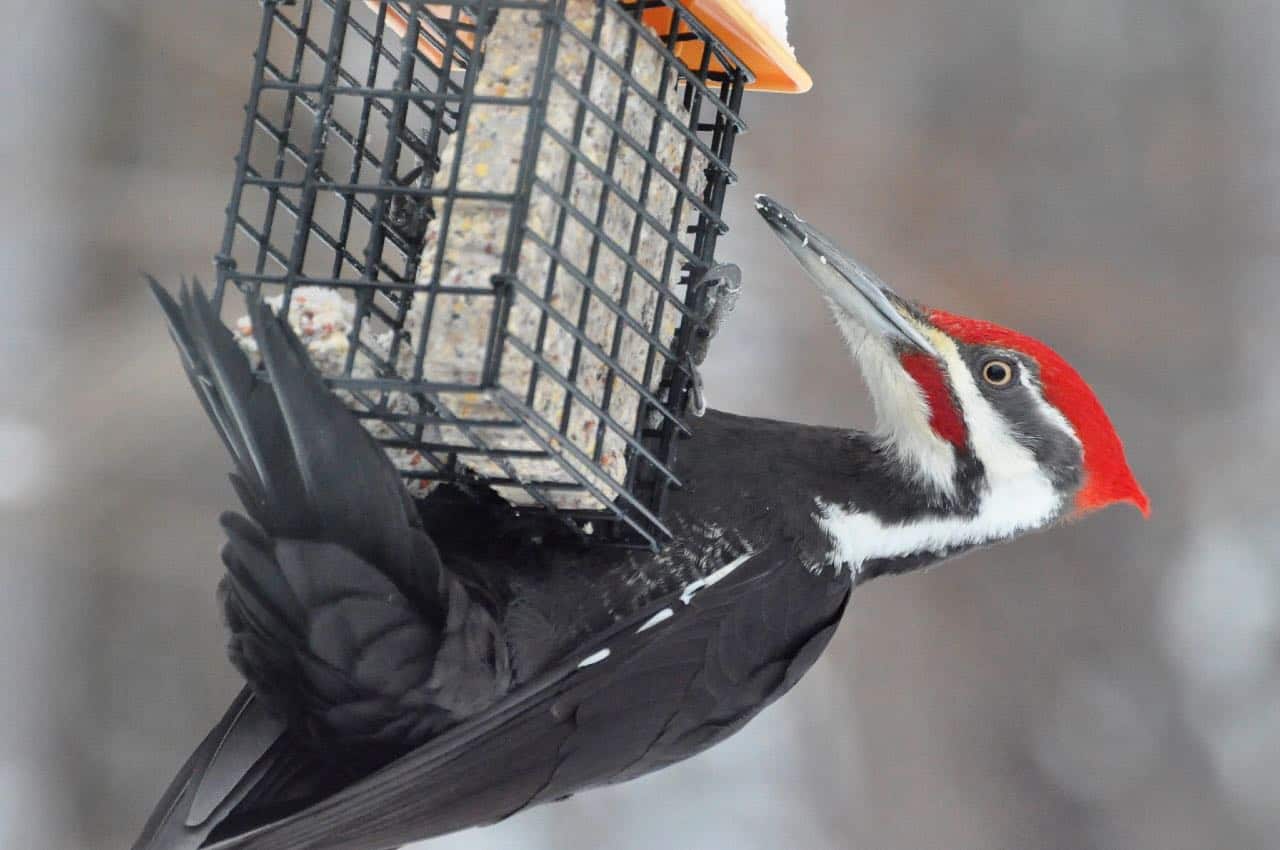


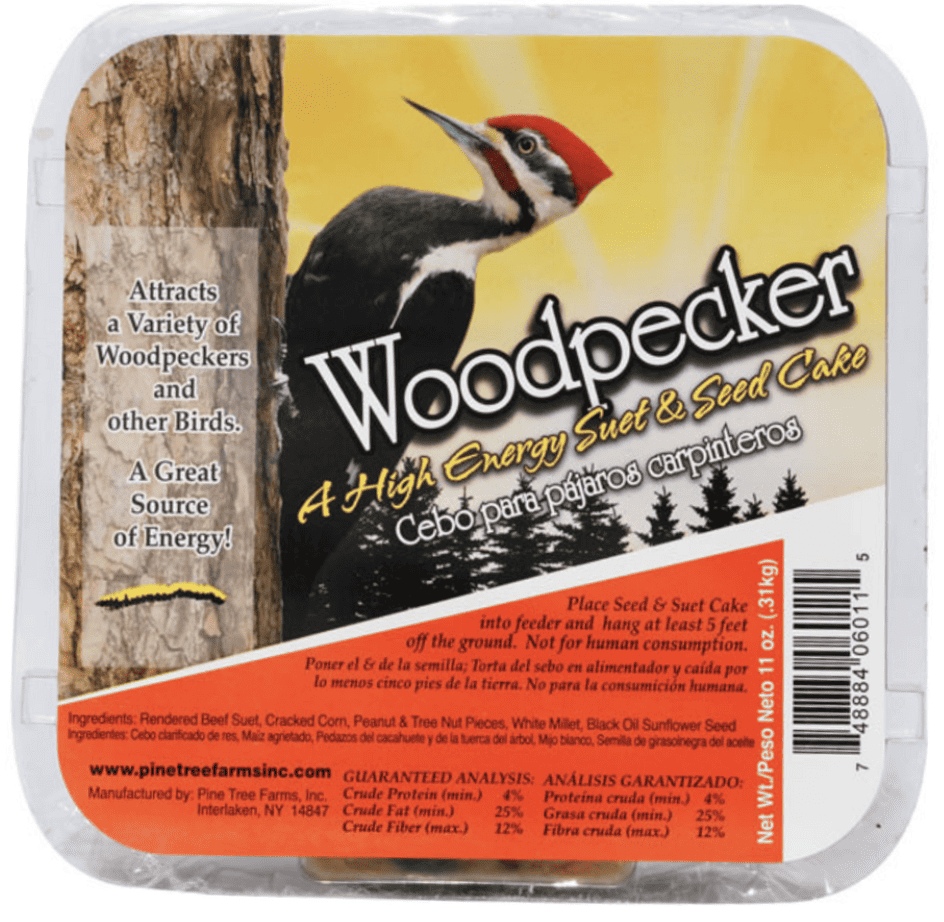

Hello Tammy
I live in a small Hamlet in Southern Ontario. I have often seen Pileated woodpeckers high in the trees, and heard them . They seem like very shy birds and spook easily. Although I never clear away dead fall in the small wooded area there is a tall dead stump that fell across the stream and it was full of carpenter ants. It is fairly close to the house so I put ant traps in it . I think now this was a mistake. We won’t be removing the stump as it is not in the way.
This fall I will be making a suet feeder for them. How high up should it be hung.
I don’t think the woodpeckers have a height preference. I’ve seen people share photos of a pileated woodpecker eating suet from a 4′ pole.